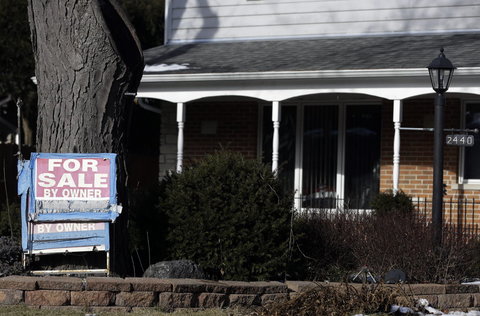The leveling was not unexpected as more sellers ventured into the market and may have set less ambitious asking prices in the face of higher mortgage rates.
The Standard Poor’s Case-Shiller home price index, which tracks sales in 20 cities, showed prices up 12.4 percent from July 2012 to July 2013, and a separate index of mortgages backed by Fannie Mae and Freddie Mac showed an 8.8 percent gain in prices over the same time period.
But the month-to-month increase in the Case-Shiller index slowed to 0.6 percent, after gains of 1.7 percent in April, 0.9 percent in May and 0.9 percent in June.
Robert Shiller, the housing economist who helped develop the home price index, cautioned that despite double-digit gains in many cities, prices are still low compared with their prerecession peaks.
“It might be slowing down because the thing that’s driving this doesn’t seem to be excitement about a new era,” he told CNBC. “That’s what we saw eight years ago. But now it’s a rebound, interest rates are still maybe lower than they’ll be in a year — it’s that kind of thing.”
Still, the housing market recovery has exceeded expectations. Activity has been spurred by such factors as increased pressure to buy before prices rise further, a gradual relaxation of tight lending standards, inventory shortages and large-scale purchases of homes for the rental market by institutional investors, analysts said.
Higher home prices help the economy not just by strengthening the home building and real estate industries, but by making homeowners feel wealthier and more likely to spend. While the number of Americans who lost all the equity in their homes because of falling values is still huge by historical standards, rising prices have helped nudge more and more households back above water. According to CoreLogic, 2.5 million households regained equity in their homes in the second quarter.
Years of pent-up demand and emboldened consumers should continue to fuel the market, analysts said. But politics, including a looming battle over federal spending and the debt ceiling, could rein in the gains. “The real test will come over the next few months, given the sharp drop in mortgage demand and the potential for a rollover in consumers’ confidence as Congress does its worst,” wrote Ian Shepherdson, an economist with Pantheon Macroeconomics.
Mortgage rates went from about 3.4 percent on 30-year fixed-rate loans in January to about 4.4 percent in July, according to a survey by Freddie Mac, in anticipation of a wind-down of stimulus programs by the Federal Reserve. But this month, the Fed decided to delay the wind-down, which may lead to a dip in rates. Mortgage rates have much smaller impact on home sales than other factors like the employment rate, Mr. Shiller said.
But mortgage rates have put the brakes on refinancings, which helped ease pocketbooks by lowering monthly payments. On Monday, Citigroup became the latest of several banks in recent months to announce layoffs in its mortgage division.
Home prices are still almost 25 percent lower than their peak, and some economists cautioned that major factors — like slow job and wage growth — will limit their recovery.
“While recent results have been considerably better than those seen earlier in the cycle, and also better than we had anticipated,” wrote Joshua Shapiro, the chief United States economist for MFR Inc., “we have not given up on the argument that a large supply overhang of existing homes (factoring in all those in foreclosure or soon to be) promises to keep pressure on prices for some time.” Still, the share of all sales that are foreclosures continues to decline.
Prices were up for the year in all 20 cities tracked by Case-Shiller, but the gains varied widely, from 3.5 percent in New York and 3.9 percent in Cleveland on the low end to a frothy 24.8 percent in San Francisco and 27.5 percent in Las Vegas.
But prices in San Francisco are still only at 2004 levels, cautioned Steve Blitz, chief economist for ITG Investment Research. “For those who bought and still hold homes in 2005, ’06 and ’07, they may still be in a negative equity position, depending on the terms of their mortgage,” Mr. Blitz wrote. “Don’t let those double-digit year-over-year percentage gains bias opinion to believe all is all right.”

Article source: http://www.nytimes.com/2013/09/25/business/economy/home-prices-still-rising-but-at-slower-pace.html?partner=rss&emc=rss


